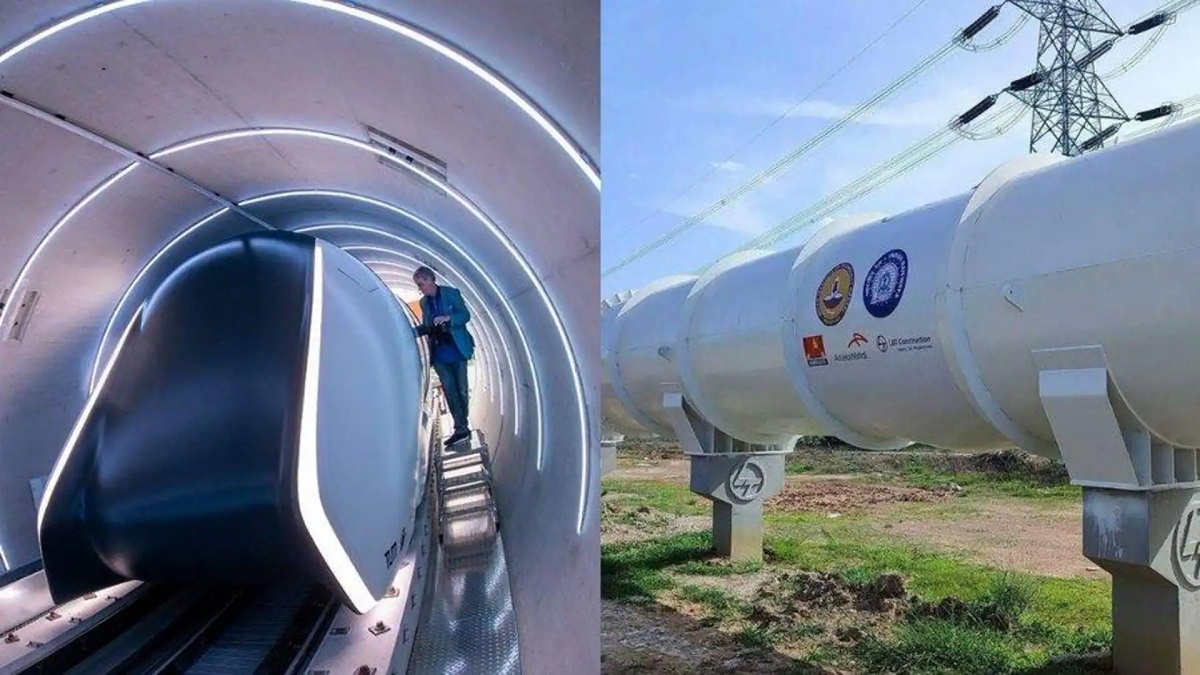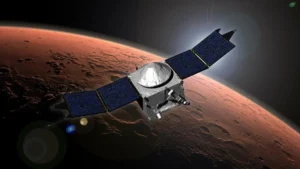IIT Madras, in collaboration with Indian Railways, has launched India’s first hyperloop test track, marking a major step toward revolutionizing high-speed transportation. This 422-meter-long facility, located within the IIT Madras campus, is expected to pave the way for ultra-fast travel, potentially cutting down long intercity journeys to just a few minutes. The hyperloop system uses electromagnetically levitated pods inside vacuum tubes, reducing air resistance and allowing speeds comparable to airplanes.
How Does the Hyperloop Work and What Makes It Different?
The hyperloop technology operates on the principle of magnetic levitation, where pods move inside a vacuum tube with minimal friction and air resistance. This setup enables speeds of up to 1,200 km/h, making it significantly faster than traditional rail networks. According to reports, a hyperloop system could cover distances like Delhi to Jaipur or Bengaluru to Chennai in just 30 minutes. The technology, first conceptualized by Elon Musk, has gained global attention, and India’s initiative marks an important step in adapting this futuristic transport model for real-world use.
Who is Leading the Project and How is It Being Developed?
This project is a result of a strong partnership between the Indian government and academia. The test track is funded by the Ministry of Railways and serves as a research platform to refine hyperloop technology for large-scale implementation. Railway Minister Ashwini Vaishnaw has announced an additional $1 million grant to accelerate research and testing. IIT Madras’ Avishkar Hyperloop team, which has been actively working on this concept for years, is playing a crucial role in developing and testing the pods.
When Will Hyperloop Become a Reality in India?
The next phase of the project involves identifying a 40-50 km stretch for a full-scale hyperloop system. If the pilot testing is successful, Indian Railways aims to move toward commercial deployment. Once implemented, this technology has the potential to transform public transport by making travel faster, more efficient, and energy-saving. The Economic Times has reported that the government is keen on supporting further developments to make this a feasible transportation mode in the near future.
India’s first hyperloop test track is a crucial milestone in transportation innovation. If successful, it could redefine travel in the country, making intercity commuting faster and more convenient. With continued research and investment, hyperloop travel may soon become a reality, putting India at the forefront of futuristic mobility solutions.
India’s First Hyperloop Test Track – Key Highlights
| Aspect | Details |
|---|---|
| Why in News? | IIT Madras and Indian Railways launched India’s first hyperloop test track. |
| Location | IIT Madras campus, Tamil Nadu |
| Track Length | 422 meters |
| Technology | Electromagnetically levitated pods in vacuum tubes |
| Speed Potential | Up to 1,200 km/h |
| Travel Impact | Can reduce intercity travel to just 30 minutes (e.g., Delhi-Jaipur, Bengaluru-Chennai) |
| Funding | Ministry of Railways, additional $1 million grant announced |
| Next Steps | Identify a 40-50 km stretch for commercial deployment |
| Significance | Positions India at the forefront of futuristic transportation technology |



 NASA Loses Contact with MAVEN Spacecraft...
NASA Loses Contact with MAVEN Spacecraft...
 US FDA Qualifies First AI Tool to Accele...
US FDA Qualifies First AI Tool to Accele...
 11th India International Science Festiva...
11th India International Science Festiva...







